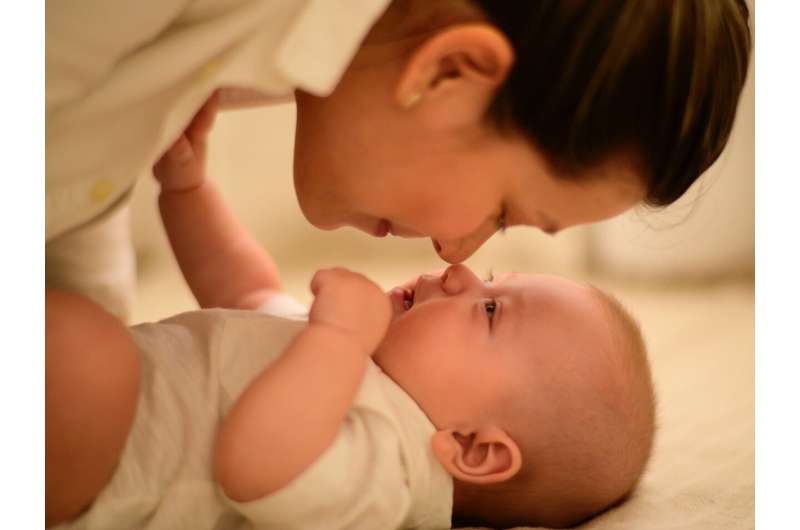This article has been reviewed according to Science X's editorial process and policies. Editors have highlighted the following attributes while ensuring the content's credibility:
fact-checked
trusted source
proofread
Infant seating devices may reduce language exposure

When a parent needs to cook dinner or take a shower, often they will place their baby in a bouncy seat, swing, exersaucer, or similar seating device intended to protect the baby and grant a degree of independence to both the parent and infant. For many parents, these devices represent a helpful extra set of hands; for babies, the freedom to safely explore their immediate surroundings.
As useful as these devices are to both parents and infants, they may present trade-offs regarding their effect on infant's exposure to adult language, which is critical for language development. That's according to a new study published in Infant and Child Development by researchers at the Stress and Early Adversity Lab at Vanderbilt Peabody College of education and human development.
Within infants' natural environments and daily routines, the study explored interactions between their exposure to adult language and their placement in seating devices, which support posture and promote the infant's ability to play with objects or observe their surroundings without direct support from a caregiver.
The researchers found that infants were exposed to fewer words when spending time in seating devices compared to when spending time in other placements. They also found that infants who spent the most time in seating devices heard nearly 40% fewer daily words compared to infants who spent the least amount of time in seating devices. Infants with more, compared to less, seating device use also had less consistent exposure to adult language throughout the day.
Sixty mothers and their four- to six-month-old infants participated in this study. For three days, a Language Environment Analysis audio recording device (i.e. "talk pedometer") captured language exposure. The mothers inserted the audio recorder into the pocket of a vest their babies wore. Automated software estimated from the recordings the total number of adult words spoken to or near the infant over the course of a day. To record real-time behaviors of infant placement, the mothers responded to 12 brief surveys per day about their infant's current location and use of seating devices.
Caregiver reports of their child's placement in seating devices accounted for 10% of an infant's daily exposure to adult words, which the researchers say is a striking finding due to the complex nature of language exposure and how many other factors may influence children's exposure to speech (e.g., caregiver's talkativeness, presence of other siblings).
"Infants are learning all the time, including from spoken language. Our findings suggest that infants' opportunities to learn from adult speech may be influenced by use of seating devices. This gives us an important clue about how contexts may support and hinder early language-learning," said first author and doctoral student, Lauren Malachowski.
Kathryn Humphreys, assistant professor of psychology and human development and expert in infant and early childhood mental health, is the senior author of the study. She notes that infant seating devices can provide a convenient way to keep infants safely contained while caregivers attend to other tasks. However, given the potential for frequent and prolonged use of these devices, she says that parents may want to be intentional about interactive opportunities while the infant explores their surroundings as well as consider wearing or otherwise carrying their infant on their body as much as possible to create more opportunities for engagement through speech.
"While we need more research to be certain that seating devices reduce the richness of infants' language environments, these findings are influencing my own decisions about intentional placement with my six-month-old," Humphreys said. She suggests that safe and convenient places are a boon for both infants and their caregivers, but that there is a risk for reduced levels of interactions when infants are stationary and not moving to where their caregivers are active.
More information: Lauren G. Malachowski et al, Infant placement and language exposure in daily life, Infant and Child Development (2023). DOI: 10.1002/icd.2405




















